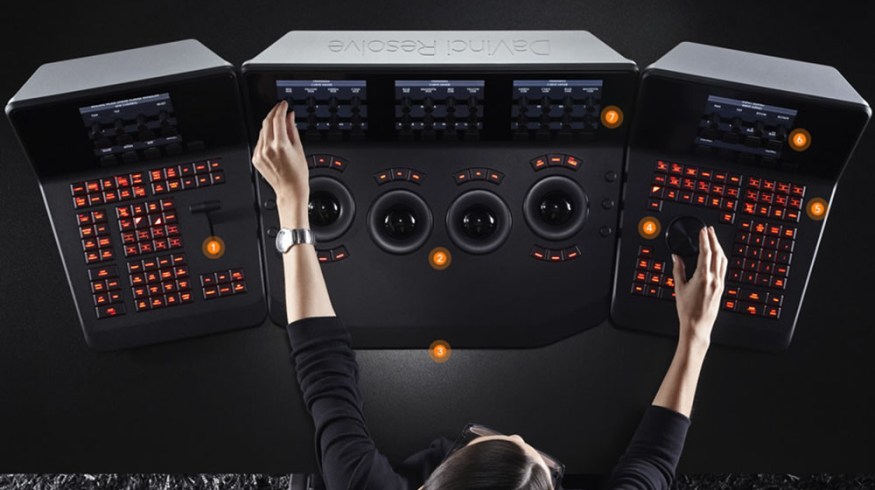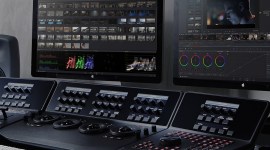
Speed Up Your Session With DaVinci Resolve Power Grades
Check out seven awesome Power Grades that can help you quickly apply killer looks in DaVinci Resolve. Download them now!
Top Image from Blackmagic Design
In DaVinci Resolve, the Power Grade folder stores common custom grades and is the portal for sharing grades between projects. Power Grades can serve as useful shortcuts in session to quickly apply looks that might take more than several minutes to execute. In fast sessions, any time gained is instrumental to focusing on the task of creative grading.
Creating a Power Grade
To create the most effective Power Grades for your color grading style, identify what actions you’re executing over and over again, especially the ones that take either a long time or involve multiple steps. Then strip the look or the function down to its most basic nodes and grab a still of that. Be sure to label it so you can refer back to it.
The fastest way to apply a Power Grade is to double-click it, rather than choosing Display Node Graph to select and apply individual nodes. Double-clicking will append the entire Power Grade to the end of the shot, on top of what’s already been performed. To minimize confusion it’s important to include only the nodes you want to repeatedly apply to the shots. Most of my Power Grades are not crazy looks. Rather, they’re usually executions of one specific action.
To strip down a shot for use as a Power Grade, create a second version of the shot you want to be a template for the Power Grade and remove the extraneous nodes, or save a still that you can revert back to while you destruct the node tree to create the Power Grade.
The case for keeping Power Grades simple is that many projects widely veer from each other in terms of how they were shot and the unique stylistic sensibilities that are needed for different projects. It’s best to proceed in small steps toward the grade you’re trying to achieve.
Without further ado, below are some of the Power Grades I find myself returning to. After downloading, check out this article for steps on getting them into your system. And here’s a video from MiesnerMedia that covers the whys and hows of importing and exporting Power Grades:
Noise Reduction
I use both Neat Video’s plugin and Resolve’s built-in noise reduction in different scenarios. I’ve got the settings dialed to where the Power Grade works on most shots, and of course I have the flexibility to tweak after dropping the node on. I watch for particularly noisy shots when grading and apply the Power Grade as needed during a lull in the coloring process.
Usually, I’ll apply noise reduction at the end of the session so that I can maintain real-time playback, although the Render Cache can be pretty fast and after only a few seconds the shot plays in real-time, unbeknownst to the client.
Download This Power Grade: powergrade_noise-reduction.drx
Contrast Curves for Log Images
When grading log footage, I’ve found it useful to filter the primary correction through a simple S-curve. Doing so makes the grade appear a bit more organic. Saving this as a quick Power Grade gets you working with these formats quicker.
Download This Power Grade: powergrade_log-contrast.drx
Interview Vignette

Image from Shutterstock
This circular vignette brightens up the subject and increases the contrast a bit. Depending on where the subject is situated in the frame, you may have to move the Power Window around or resize it.
Download This Power Grade: powergrade_interview-vignette.drx
Blur & Sharpen
I often sharpen Alexa footage by around 4% by reducing the Blur parameter, but it’s worked wonders on several other camera formats as well. With one click of the button, you can apply this grade on the timeline or clip level.
Download This Power Grade: powergrade_sharpen
Pool of Light
On a recent project the client wanted to brighten up an object’s shadow region, as if it were sitting in a pool of light. The busy colorist will find this useful on jobs involving product shots.
Download This Power Grade: powergrade_pool-light.drx
Outside Vignette

Image from Shutterstock
This common effect uses an inverted circular vignette that hugs the edges of the frame and then dips the shadows and midtones, creating a classic vignette that draws the viewer’s eyes into the center of the screen.
Download This Power Grade: powergrade_outside-vignette.drx
Add Black to End
I developed this Power Grade during a short-form commercial job. Resolve loops to the beginning after playing through every shot, and this disrupted a client’s viewing of the material. To remedy this, I copied an existing clip to the end of the timeline and applied this severe grade, which drops all luminance values to zero, turning the clip into a black slug.
Download This Power Grade: powergrade_add-black.drx
Develop Grades That Work With Many Projects
With Power Grades, you don’t want to get too granular, otherwise the preset is too specific and will work on a small percentage of jobs. Take a look at your own workflow and see what actions you’re continually executing to find the presets that are right for you.
Here are a few more workflow tips you might find helpful:
- DaVinci Resolve Workflow Roundtrip Breakdown
- Utilizing Remote Grades in DaVinci Resolve
- Color Grading: Using DaVinci Resolve’s Multiple Split Screens
What Power Grades are useful for your jobs and workflow? Let us know in the comments.





